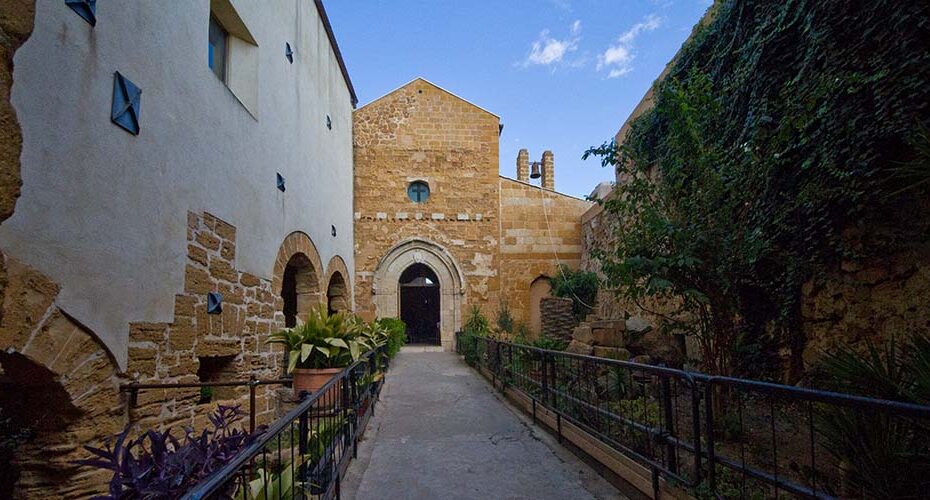The Church of Santa Maria dei Greci is located in the heart of the historic center of Agrigento. Here was once the acropolis of the ancient city and in fact the remains of an ancient Doric temple are incorporated and visible in the structure of the building. Inside the church there are the remains of a 14th century fresco cycle dedicated to the Madonna del Latte.
The Church of Santa Maria dei Greci: history and external architecture
The church of Santa Maria dei Greci was built between the 12th and 13th centuries. The area it occupies is that of the acropolis of Akragas, the ancient city of Agrigento, and in fact the building stands on the remains of a 5th century Doric temple. It may have been dedicated to Athena or to Zeus Atabirio, “of the mountain”, or perhaps to Zeus Polieo, “of the city”. The drums and parts of the capitals of the columns of the ancient temple are still visible along part of the basement. The church is called the Church of the Greeks because it was immediately occupied by a community of Greek monks who chose it as the cathedral of the Greek Orthodox rite. The façade of St. Mary of the Greeks is of extreme simplicity, except for a fine Gothic portal, barely emphasized horizontally by a bas-relief frieze. At the top is the coat of arms of the Pujades family.
The interior of the church
The interior of the church of Santa Maria dei Greci has a basilica plan, without a transept and with three naves. In the central nave there is a painted wooden beam ceiling from the 14th century. On the walls was a cycle of seven frescoes dedicated to “Our Lady of Milk”. Only two are visible today: The Vision of St. Joachim and The Presentation of Mary in the Temple.
Interesting fact: Inside the church, engraved in the stone, are the signs of the “Triple Belt”, one of the most famous and widespread esoteric symbols. These are three concentric squares that visitors usually leave at the sacred places where they go to pray.
The church of Santa Maria dei Greci also preserves a marble sarcophagus from 1570 that contains the bones of two Palermo nobles, Bartolomeo Caputo and Isabella Termini. The floor is covered with transparent plastic panels that reveal the foundations of the ancient temple, a crypt and the 19th century colonnade. Here the members of the Brotherhood of Santa Maria dei Greci were dried, sitting, before being buried.
Aggiungi ai preferiti
















